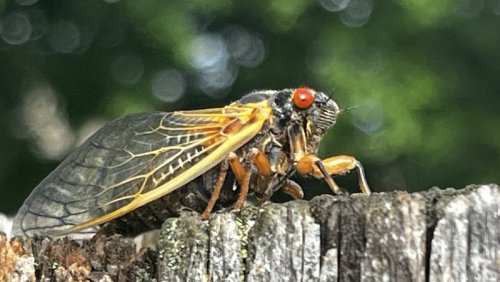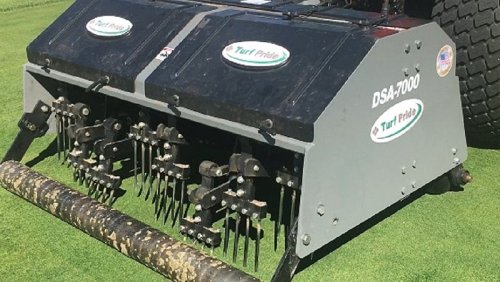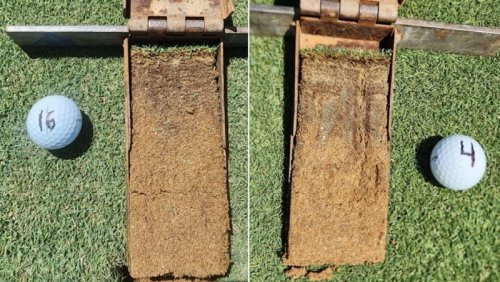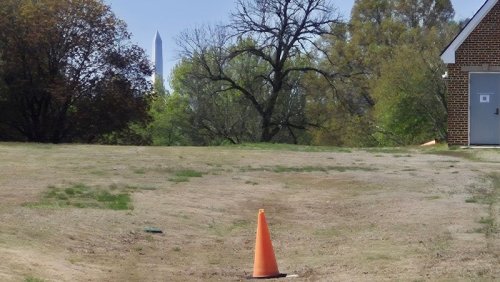

A former champion who lost only four of 54 fights — two to Ali — Liston stayed on the canvas in what has become a metaphor for handling life's many and difficult challenges. Despite his many victories in the ring and the 883 days he spent as world heavyweight champion after beating Floyd Patterson in 1962, that defeat, thanks in part to that dramatic photo of the victorious Ali, has come to overshadow Liston's accomplishments and define his career.
Some people are equipped to handle adversity. Others are not.
Metaphorically speaking, longtime superintendent John Colo has taken a series of gut punches that would leave many unable to get off the mat. Even real-life challenges like job loss and wife Peggy's terminal battle with cancer were not enough to count out Colo, who has been director of golf course maintenance at Frenchman's Reserve in Palm Beach Gardens, Florida for the past five years.
The past decade has been an example of what it means to face adversity head-on and beat it. But that ability to bounce back from adversity began a long time ago, says Colo's twin brother Jim.
"My brother, John, has been through the obstacle course of life which started back in high school when he was hit in the head by a baseball off a bat as he stood right behind the pitcher’s mound," said Jim, superintendent at Naples National Golf Club on Florida's Gulf coast. "He spent a few days in the hospital and recovered. Although knocked down, he got back up."
When he lost two jobs as a superintendent in less than a year in Pennsylvania, he did whatever he had to do to continue to provide for his wife and their two sons, Robert and Kevin.
"I did landscaping. I plowed snow. I drove limousines. I was a UPS helper during the holidays," Colo said. "I just kept busy. You had to keep busy. I had to make money. I had to support the family, so I kept going. You know, perseverance. It was a big juggling act."
A native of Painesville, Ohio, Colo is a disciple of the late Jim Loke. He had been superintendent at the Country Club of York in Pennsylvania for nearly 10 years when he was squeezed out in December 2012. Eight months later, after working for two months as superintendent at Hartefeld National in Avondale, Pennsylvania, life dealt out another blow.
"Two days before I got let go at Hartefeld is when we found out Peggy first had cancer," Colo said. "So that's always nice."
Every time life takes a swing at John Colo, he manages to pick himself up off the mat. Photo by John Reitman Rather than stay down, he picked himself up, took a yearlong leave of absence and went home to take care of his sick wife and their family.
"You know, it was God saying, 'OK, Colo, you can't work an hour away from home. You have to be at home to take care of Peggy and the boys,' " he said.
"No matter what it is, you have to lace up your shoes and keep moving."
He later took a landscaping job and immersed himself into the gig economy before returning to the golf course in 2015 as superintendent at Little Mountain Country Club in his hometown of Painesville. He had been there less than six months when the phone rang during a trip to an amusement park. On the other end of the line was Steve Ehrbar at Jupiter Hills in Tequesta, Florida offering Colo an assistant's position. It was the second time Ehbar, another Loke protegé, tried to recruit Colo to Florida.
"Steve had called me twice, the first time was in early 2014. "Man, I'd love to come, but I have to sit tight.
"The second time, we were in Sandusky at Cedar Point for the week. Peggy and I talked about it. She grew up in Kilkee, a seaside town in County Clare, Ireland, and she always wanted to live close to the beach. We decided it was time."
Colo eventually moved up to superintendent of the Hills Course before getting the job at Frenchman's Reserve in 2020, two years after Peggy succumbed to her fight against cancer.
"Through his golf course management career he has been through the lows and highs of this business," said Jim Colo. "John has been excused from a couple jobs, but has not let that deter him from being the best among superintendents. He was knocked down but got back up. Six years ago, John lost his wife Peggy to the dreaded disease, cancer. Again, hit directly in the teeth by life, he did not waiver. After a devastating life event, John has continued to rise and become a stronger father to Robert and Kevin and rely on his skills as a superintendent to produce conditions second to no one."
The move to Florida reunited Colo with his brother and best friend, who has been in Naples for 13 years.
"I have great friends, namely Jim and Steve, who have really helped me get through this," Colo said."
Said Jim: "John’s ability to get back up and overcome everything is a testament to his perseverance and resiliency to lead a team and keep his family together. At the end of the day, he and I look for each other's phone call. Our conversation goes on for a few minutes or up to 20 minutes as we both share our day during the car ride home. It's a bond that can't be broken."
- Read more...
- 4,214 views















